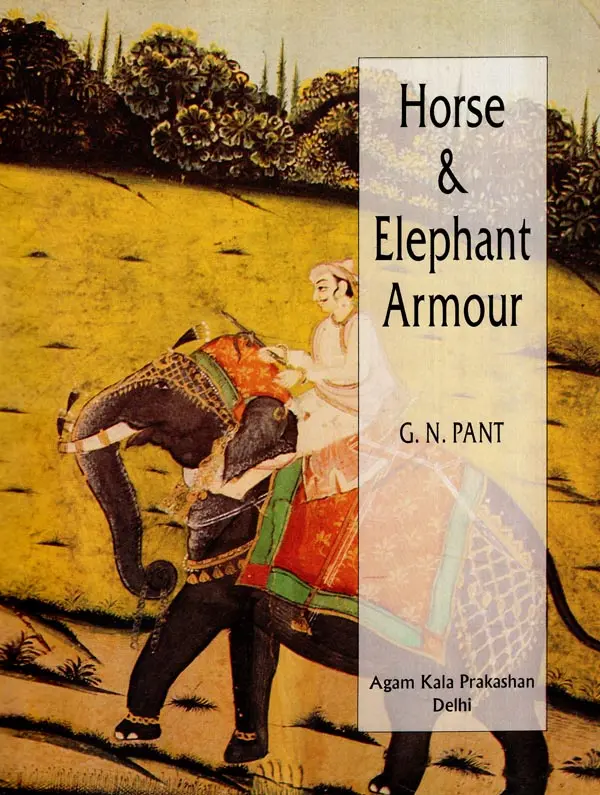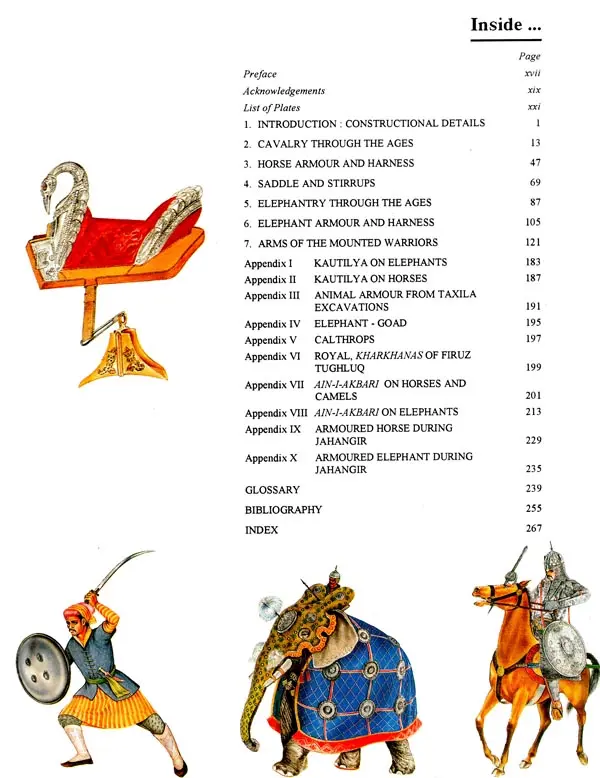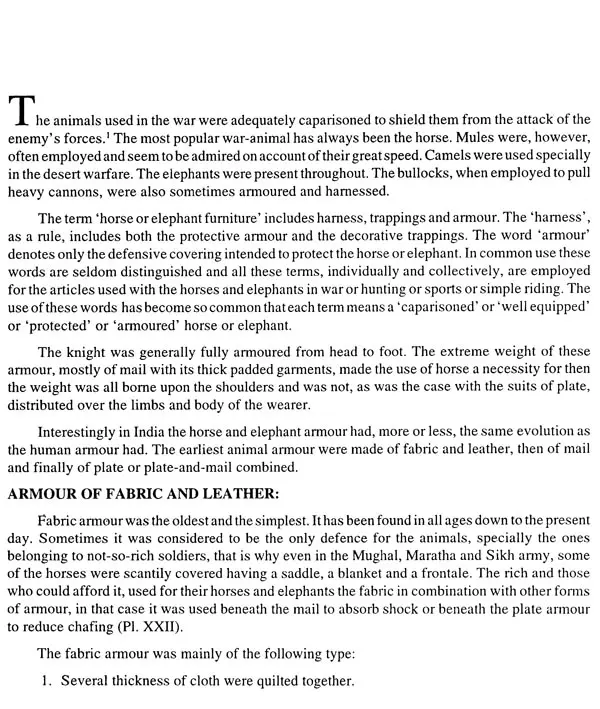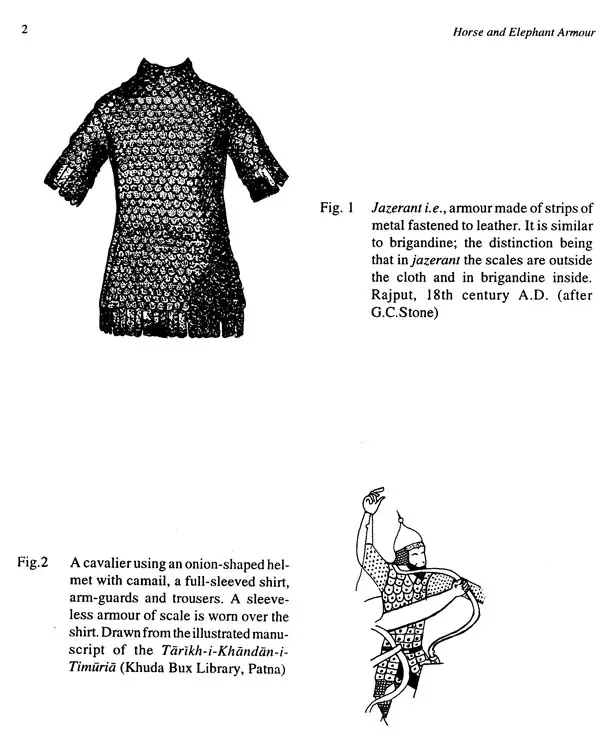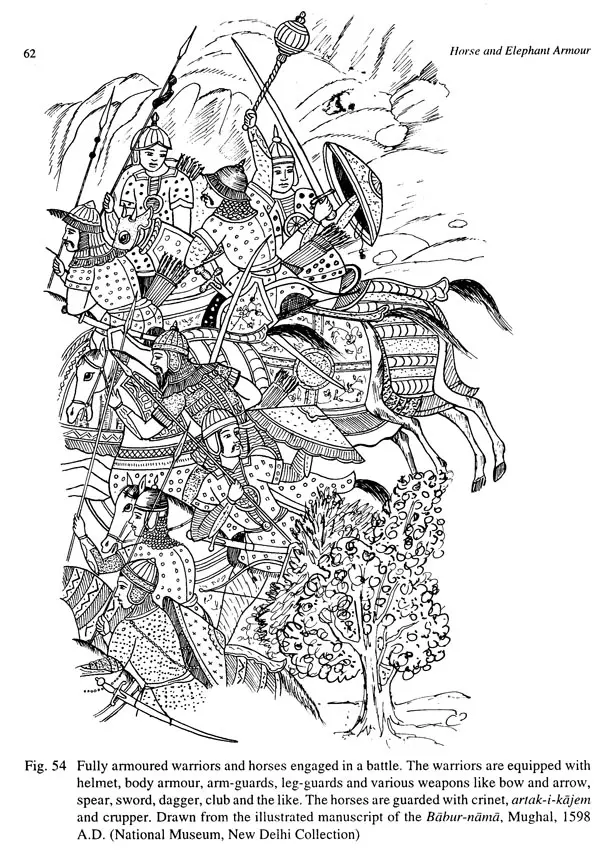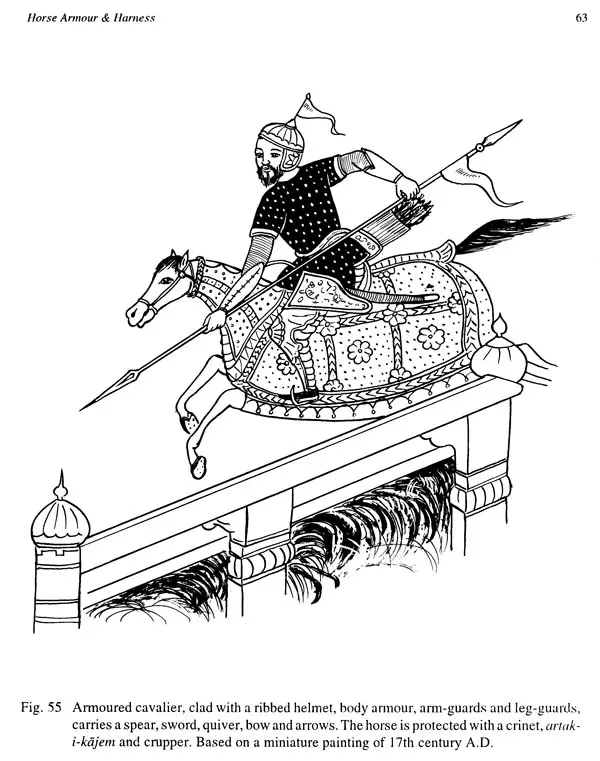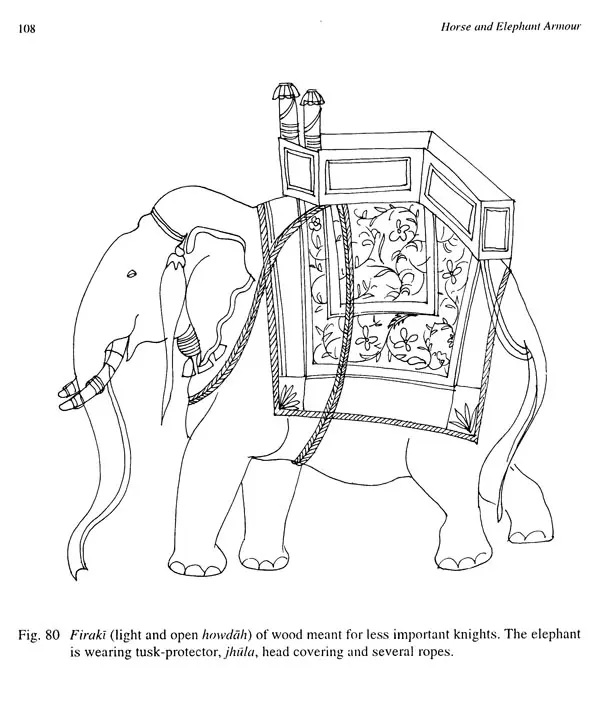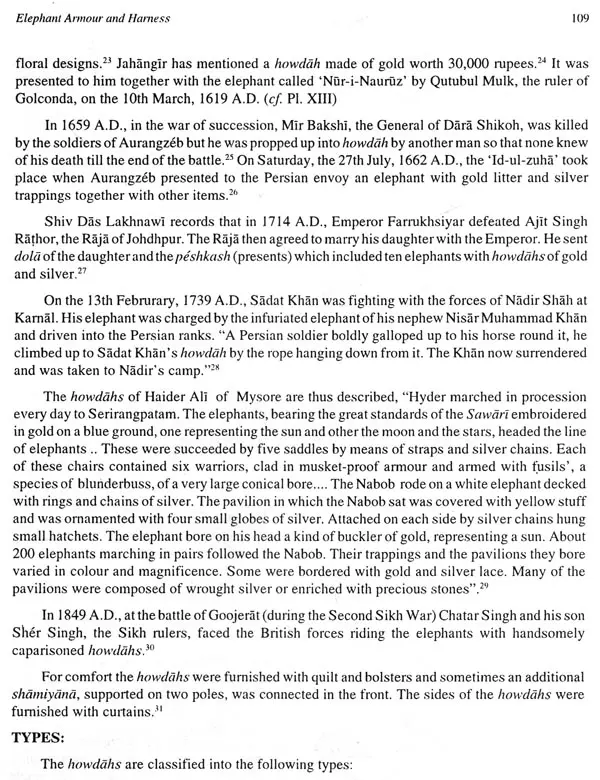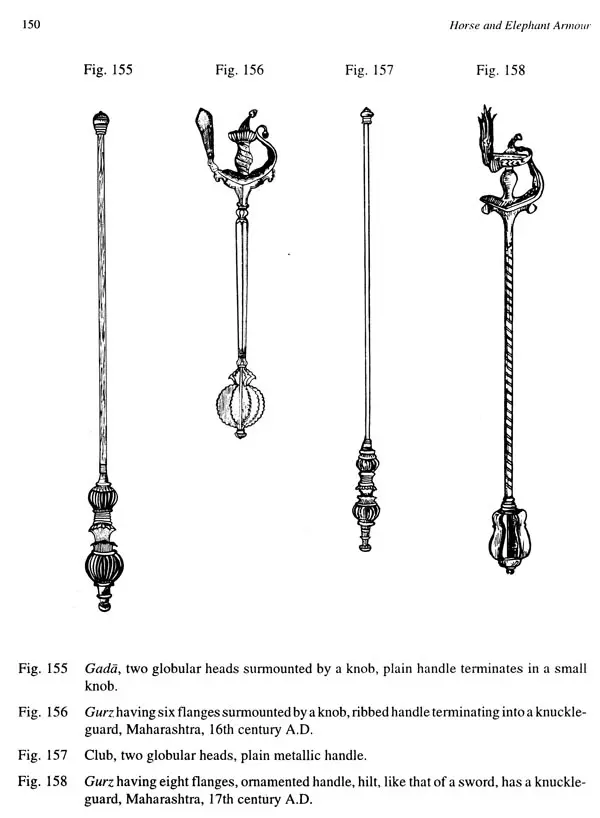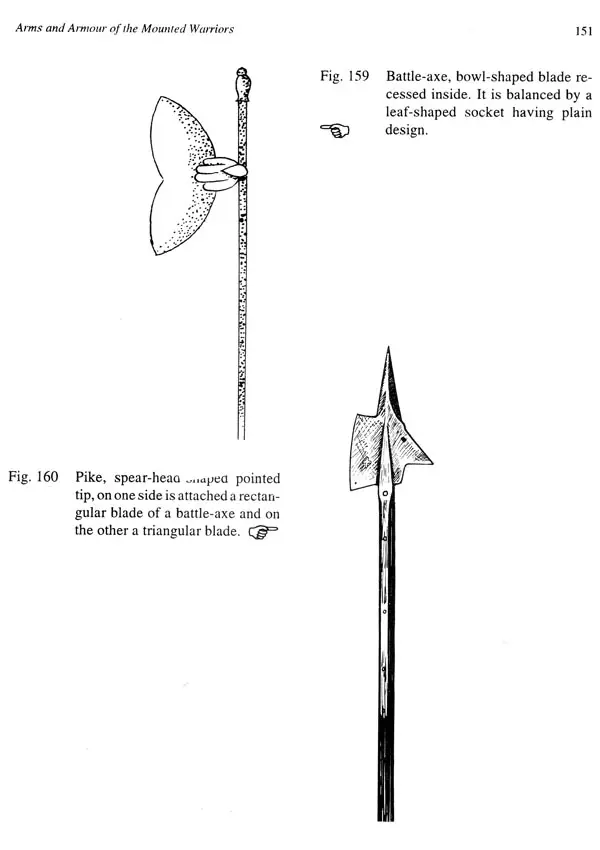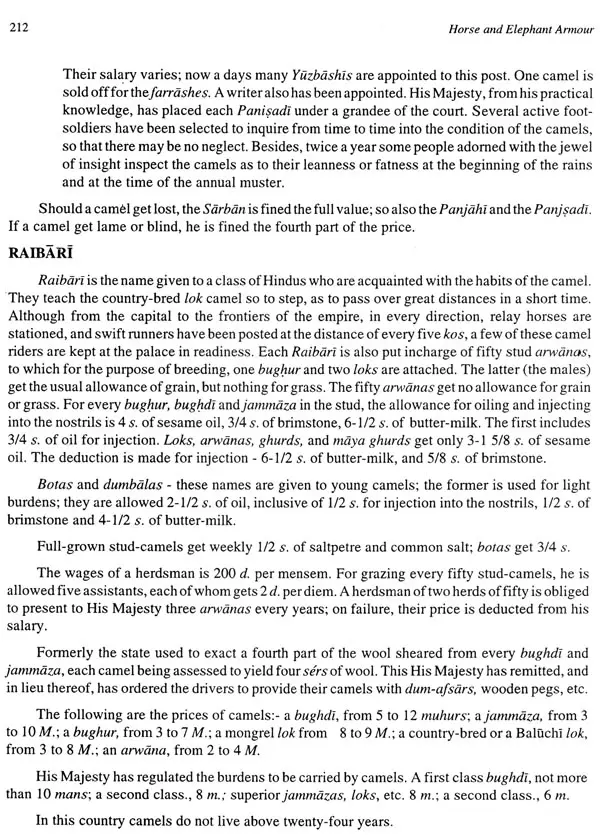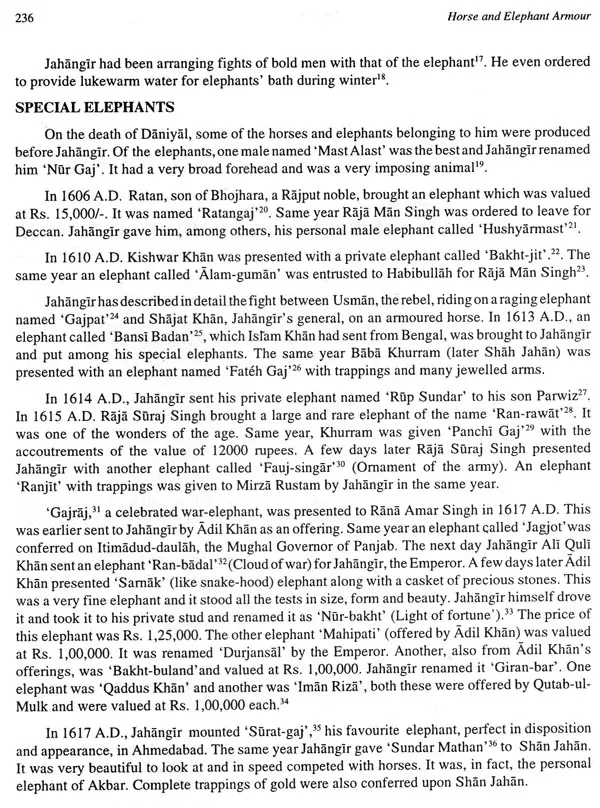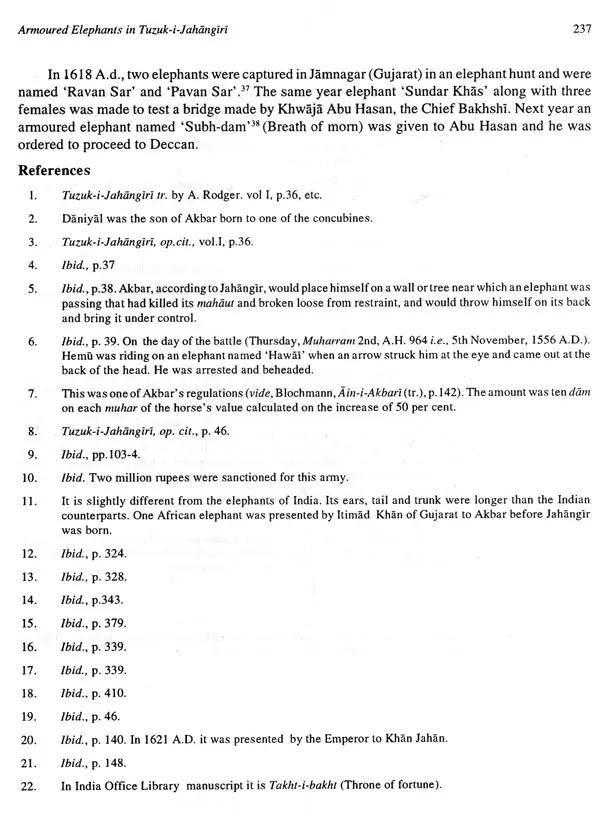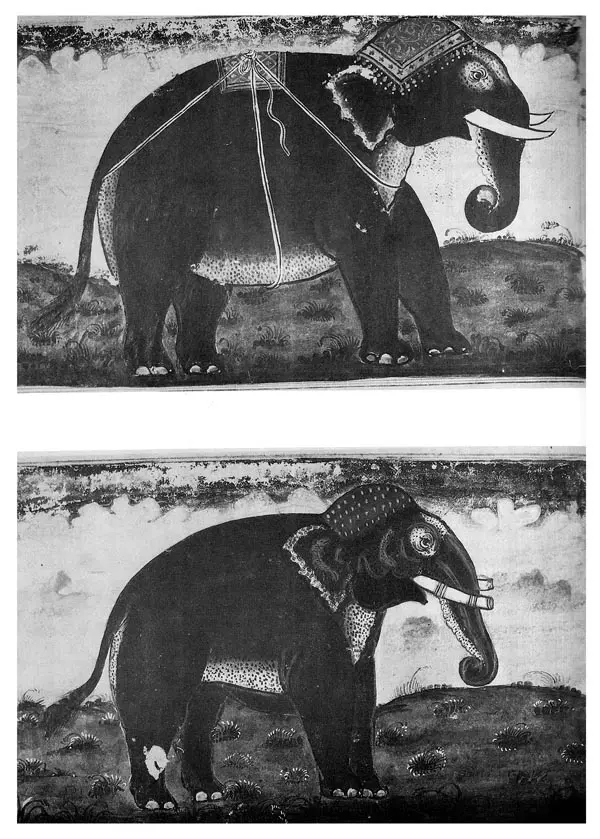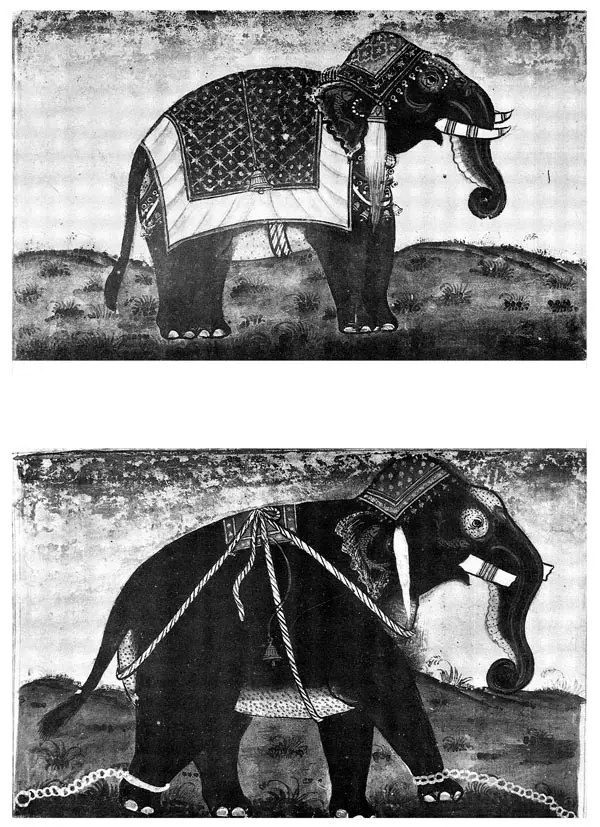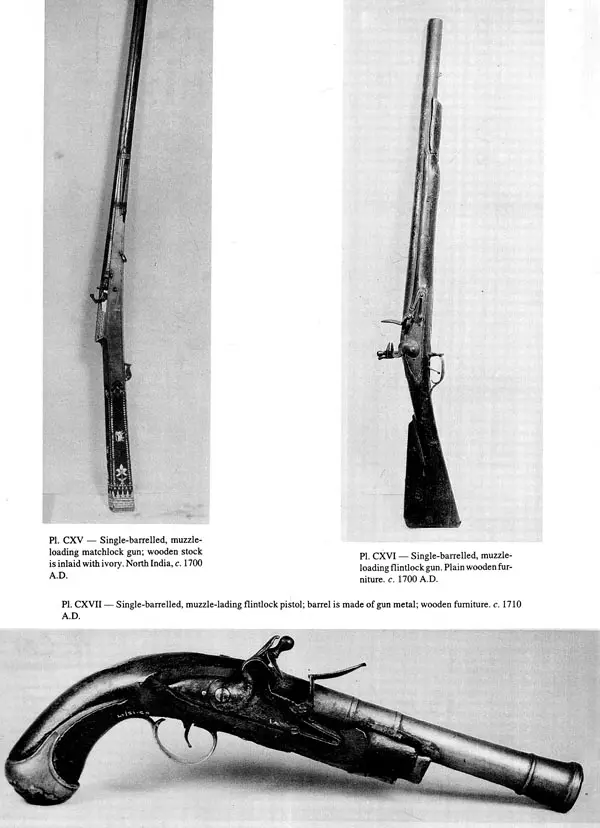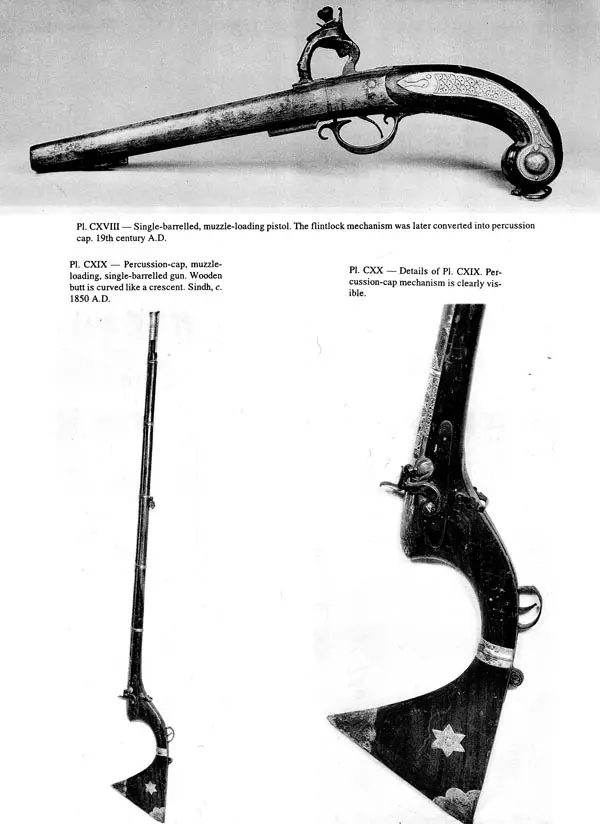
Horse & Elephant Armour
Book Specification
| Item Code: | UAO330 |
| Author: | G.N. Pant |
| Publisher: | Agam Kala Prakashan, Delhi |
| Language: | English |
| Edition: | 1997 |
| ISBN: | 8173200068 |
| Pages: | 402 (B/W Illustrations) |
| Cover: | HARDCOVER |
| Other Details | 11.50 X 9.00 inch |
| Weight | 1.59 kg |
Book Description
The Indian rulers placed great reliance on the elephants and harnessed them with several protective and ornamental coverings. The howdah, imari, trunk protector, tusk protector, eye protector, chains, ropes and ornamental jhula have been vividly described and aesthetically displayed. A number of appendices, a glossary of technical terms, a comprehensive bibliography and a detailed index are added attractions. The warrior was very much dependent upon his horse or elephant in active warfare which made it necessary that the war animal was properly harnessed and armoured. The myth that the ancient Indians never attained proficiency in horse warfare has forcibly been demolished.
The author's thirty-five years of association with the National Museum, New Delhi enabled him to handle, scrutinise and study the original specimens of elephant and horse armour put on show and those preserved in the reserve collection. He has coroborrated his inferences with the ones depicted in paintings, in sculptures and on coins.
The book Horse and Elephant Armour will serve as a reference work and is bound to be welcomed by the researchers in the field of military science, museology, art and Indian culture. These mute examples of the bygone days are the tangible proofs of the sacrifices of the martyrs who laid down their yesterdays for our today.
Dr. Pant's first booklet Indian Weapons was published by the Indian Council of Educational Research and Training. New Delhi in 1966 and then second. Studies in the Defence History -a Bibliography, by the U.S.I., Ministry of Defence. The gigantic work Studies in Indian Weapons and Warfare (1970) fetched him the President of India's acclamation and Bhartiya Ashtra Shastra (in Hindi) won for him 'Acharya Narendra Dev Award'. Indian Arms and Armour (in three volumes). now out of print, proved the landmark and his Indian Archery (reprinted, 1993) is acknowledged as the last word on the discipline. Some other major publications authored by Dr. Pant are Weapons in the Babur-nama; Catalogue of the Weapons in the Junagadh Museum, Gujarat: Catalogue of Edged Weapons in the Salarjung Museum, Hyderabad: Catalogue of the Weapons in the Bharat Kala Bhawan, Varanasi Catalogue of Indian Arms in the Museum for Folkerkunde, Hamburg. Germany and so on. Todate Dr. Pant has seventeen books and more than three hundered research papers to his credit. In addition he has edited dozens of professional journals.
Dr. Pant is the President, Museums Association of India and member, ICOM, Author's Guild of India; Art and Culture Society of India; Association of Art Historians; Arms and Armour Society. London and a host of other professional technical organizations. He is affiliated with several universities in India and has produced fifteen Ph. D. scholars. Dr. Pant finds mention in various "Who is Who' published in India and abroad.
Dr. Pant has been nominated Fellow of Royal Asiatic Society (FRAS), London and a Fellow of Society of Future Educators (FSFE), U.S.A. As an erudite scholar he has travelled extensively and examined the art collections in the museums of Europe, U.S.A., Russia, Africa and South east Asia. He presided over an international Conference organised by the University of Now York, USA. in 1985.
Dr. Pant has been felicitated by several societies and associations and has won prestigious awards. Apart from 'Acharya Narendra Dev Award, the 'Indira Priyadarshini Award (New Delhi, 1994) and the Twentieth Century Achievement Award (U.S.A., 1995) have been conferred upon him. The American Biographical Institute, USA. has selected Dr. G. N. Pant as the Man of the Year, 1995.
Book's Contents and Sample Pages
